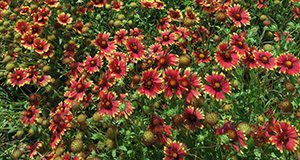Honey producers in Florida have two main avenues for selling their hive products. Larger operations must be properly permitted by the Florida Department of Agriculture and Consumer Services and must bottle honey in a certified food establishment. Smaller-scale honey producers, however, may be exempt from needing these licenses, under Florida’s cottage food laws. This 4-page fact sheet written by Nancy Gentry, James D. Ellis, and Mary Bammer and published by the UF/IFAS Entomology and Nematology Department discusses the laws regarding bottling, labeling, and selling honey in Florida both under and outside of the cottage food laws.
http://edis.ifas.ufl.edu/in918
Tag: James D. Ellis
Florida Beekeeping Management Calendar
Climate, plant communities, and timing of floral resources differ significantly across Florida, which means that management of European honey bee colonies in Florida differs as well. This 8-page fact sheet written by James D. Ellis, Mary C. Bammer, and William H. Kern and published by Department of Entomology and Nematology outlines a management calendar created for Florida beekeepers. It is specific to region (north, central, and south Florida) and month and includes recommendations for major management considerations like when to treat for parasites or pathogens and when to feed colonies or harvest honey. This management calendar, while not exhaustive, is a valuable reference or starting point for honey bee colony management in Florida.
http://edis.ifas.ufl.edu/in848
A Guide to Planting Wildflower Enhancements in Florida
The establishment of native wildflower plantings in Florida can benefit agricultural producers as well as native pollinators and other beneficial insects. Wildflowers provide forage and nesting sites for bees, butterflies, and other pollinators, increasing wild bee numbers across the farm, and increasing natural enemies of insect pests. This 6-page fact sheet written by Mary C. Bammer, Josh Campbell, Chase B. Kimmel, James D. Ellis, and Jaret Daniels and published by the UF/IFAS Department of Entomology and Nematology discusses choosing the right mix of native plant species to benefit many pollinator species, as well as proper site selection, planting practices, and weed control techniques. Wildflower plots are practical to manage, maximize benefits to wildlife, and fit well into overall agricultural operation management practices.
http://edis.ifas.ufl.edu/in1180
The Social Organization of Honey Bees

A honey bee colony is a superorganism, which means that together its members function like a single animal. Bees within a colony work together like the cells in a human body. They warm the colony in the winter by vibrating their wings to generate heat and cool it in the summer by ferrying in droplets of water and fanning air over them. Worker bees fan air into and out of the colony entrance in distinct inhalations and exhalations. Colonies reproduce by swarming to create new daughter colonies that in turn thermoregulate, breathe, and reproduce just as a single autonomous animal does. In three pages this fact sheet explains the intricate caste system and age-based division of labor that allows colonies of humankind’s best-loved pollinators to function and thrive. Written by Ashley N. Mortensen, Bryan Smith, and James D. Ellis and published by the Entomology and Nematology Department.
http://edis.ifas.ufl.edu/in1102


